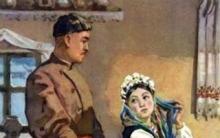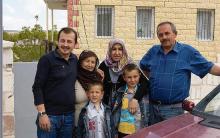This article was written with the aim of introducing some memorial complexes located in our country and abroad.
What is the memorial complex?
Usually, we're talking about about parks with definite boundary lines and a clear layout. There are often large parterres and wide alleys. In addition, it is surrounded by numerous green spaces and trees, preferably with a weeping or pyramidal crown.
Memorial complexes- this is a certain territory with monumental architectural structures, such as:
- Pantheons.
- Sculpture groups.
- Mausoleums.
- Monuments.
- Obelisks, etc.

All of these monuments listed above are dedicated to outstanding historical events from the history of the state and the people inhabiting it.
Eternal flame
One of the most outstanding attractions Nizhny Novgorod is the memorial complex “Eternal Flame”. It is located on the territory of the Nizhny Novgorod Kremlin. This monumental ensemble was founded in 1965, then locality was called Mr. Gorky. The monument is dedicated to the military feats and merits of the heroes of the Second World War. This place is of great importance for the residents of the city, because many people laid down their lives for a peaceful sky for their children and great-grandchildren. On May 9, 1970, a T-134 tank was installed on the territory of the memorial. In 1980, a guard of honor consisting of schoolchildren was organized near it.

In the center of the monumental ensemble is the Eternal Flame. The memorial complex itself consists of two black steles. Near the first, the height of which does not exceed one and a half meters, there are many gilded wreaths. This is a kind of symbol of missing soldiers. The second stela depicts two fighters. The dates of the beginning and end of the war are also written on it. On the back there is an inscription about glory to the Gorky residents who died in the battles for the independence and freedom of our Motherland.
Opening of the first Eternal Flame
The constantly burning Eternal Flame symbolizes the memory of some significant event or a person. Continuous combustion of the flame is maintained by supplying gas to a specific location. Very often the Eternal Flame is included in memorial complexes; it is practically a permanent neighbor of this monumental structure.
The first such complex with the Eternal Flame was architectural monument, built in Paris (France) in 1921. This is one of the first memorials dedicated to soldiers killed in battle.
Memorial complex of Glory
It was opened on the eve of the 65th anniversary of Victory in the war - May 8, 2010. This is the largest structure of its kind in the North Caucasus. It is located in the center of Grozny. Construction of the monument took about 6 months.
The famous building occupies more than 5 hectares of area. At the entrance to the memorial there is a monument to the former commander, hero Soviet Union, Movlid Visaitov. The monument is quadrangular in shape and consists of 2 levels. The first underground is the museum of the first president of the Chechen Republic A. Kadyrov. The upper level, which the memorial complex has, contains various retrospectives with images revealing key episodes of the Second World War. In the same part there are portrait bas-reliefs of forty heroes as well as people of various nationalities who lived on the territory of the republic during this period of time.

The upper level is topped by a huge glass dome. A 40-meter-high gilded spire is installed above the central part of the memorial. It is stylized as a military medieval throughout the entire perimeter architectural ensemble there is a park - the Walk of Fame. There are forty memorial plaques installed here. The names of residents of Chechnya who participated in the Great Patriotic War are written on them. Patriotic War.
On the highest tier of the structure there is an Eternal Flame, which burns in memory of the heroes who defended the independence and freedom of our Motherland. On special occasions, more than 15 thousand people will be able to simultaneously visit and honor the memory of the heroes. The monument is equipped with two television screens on which various videos are broadcast. Unfortunately, not all memorial complexes are of such a large scale.
The largest memorial complexes dedicated to the Second World War
The largest cultural sites our country, dedicated to the Second World War in memory of the victory of the Soviet people over Nazi Germany:
- Mamayev Kurgan in Volgograd.
- Memorial complex of Glory named after A. Kadyrov in Grozny.
Are memorial complexes and monuments necessary in our time? less and less interested in stories. However, the current generation should not forget about significant dates, heroes and various exploits performed in the name of peace throughout the world. It is the memorials with the Eternal Flame that will remind us of this.
(from Latin memorialis - memorable), works visual arts and architecture. created in memory individuals and historical events: monument, monument, pyramid, tomb, tombstone, mausoleum, triumphal arch, column, obelisk; in modern practice - architectural and sculptural complexes (sometimes in combination with other types of art) or works of architecture (mausoleums, memorial museums), suggesting spatially developed, ensemble solution image. The emergence of a memorial structure in modern times was greatly influenced by the idea of a “secular temple,” which received special development during the Enlightenment with its characteristic cult of genius. IN art XVIII- first half of the 19th century centuries in place of a traditional portrait statue, an architectural monument associated with the natural environment or landscape park is put forward; memorial structures arise in which the cult function or tasks of glorifying a victorious monarch or commander recede into the background before the idea of perpetuating the memory of warriors - national heroes who fell in battle (project of a memorial church in honor of the victory in the Patriotic War of 1812 (1815, architect A.L. Vitberg)). In the last quarter of the 19th century. eclecticism and pseudo-styles prevail in the appearance of memorial buildings; memorial structures acquire a pompous, falsely solemn appearance (monument to the Battle of the Nations near Leipzig, 1898-1913, architect B. Schmitz, sculptor F. Metzner). Memorial buildings of the 1920-30s. associated with the traditions of the Art Nouveau style and national-romantic movements; they are dedicated mainly to the victims of the First World War of 1914-18 (the ensemble of the Fraternal Cemetery in Riga, 1924-36, sculptor K. Zale, architect A. Birzeniek, etc.). Memorial buildings and museums are neoclassical in nature (A. Lincoln Memorial in Washington, 1914-22, architect G. Bacon and others).
After the Second World War (1939-45), the construction of memorial structures took on the character of a national matter. Memorial structures are dedicated to fallen soldiers and victims of fascism and are complex complexes of architecture and organized landscape, plastic and monumental decorative art with inscriptions and sometimes light and sound images (cemetery near Florence, 1959, architects F. McKim, W. Mead, S. White, sculptor E. Waugh and others; memorial structures on site; fascist concentration camps in the GDR, Parisian underground memorial to those killed in concentration camps, on the Ile de la Cité, 1961, architect J. A. Pengusson).
In the USSR, memorial structures play an important role in patriotic education Soviet people, figuratively, emotional form reminding of major milestones history of the peoples of the USSR (Field of Mars in Leningrad, Mausoleum of V.I. Lenin in Moscow), perpetuate the memory of soldiers and victims of fascist terror. Along with ensembles built on the alternation of epic-narrative, monumental-sculptural images, Soviet masters create complexes where the leading role is played by expressive combinations of symbolically generalized elements, the so-called monumental signs.
Among the most significant Soviet memorial structures are memorials to soldiers Soviet army in Treptower Park in Berlin (1946-49, sculptor E. V. Vuchetich, architect Ya. B. Belopolsky), at the Piskarevsky cemetery in Leningrad (1960), on the territory of the Brest Fortress (1971), to victims of fascist terror in Pirchupis (1960 ) and Salaspils (1961-67), in Khatyn (1968-69), on Mamayev Kurgan in Volgograd, as well as the Lenin Memorial in Ulyanovsk, etc. Literature: Historical and revolutionary monuments of the USSR. Quick reference, M., 1972.
(Source: “Popular Art Encyclopedia.” Edited by V.M. Polevoy; M.: Publishing House “Soviet Encyclopedia”, 1986.)
- - memorial plaques The oldest memorial plaques currently existing in Moscow are white stone carved plaques on the Spasskaya Tower of the Kremlin; inscriptions ...
Moscow (encyclopedia)
- - in Leningrad and the region, are departments of the V.I. Lenin Museum in Leningrad. Apartment museums: Ilyich Lane, 7/4. Lenin lived and worked in this apartment from February 12, 1894 to April 25, 1895...
St. Petersburg (encyclopedia)
- - To Ekat. 367 boards were taken into account, classified into three categories: personalistic, event-based and recording memorials. history and architecture...
Ekaterinburg (encyclopedia)
- - sculptural-architect. buildings erected in memory of those killed in wars and civilians. troubles, always with last name lists. In total, there are 11 complexes in the city...
Ekaterinburg (encyclopedia)
- - memorial monumental structures in Dr. Rome, erected in honor outstanding personalities, first of all, emperors...
Dictionary of Antiquity
- - Subsection "" includes engineering and construction projects, the purpose of which is to create the conditions necessary for the implementation of the production process by performing certain technical functions, not...
Dictionary of business terms
- - ".....
- - ".....
Official terminology
- - all operations of the enterprise, except cash...
Reference commercial dictionary
- - museums dedicated to outstanding revolutionaries, state, party. and military figures, scientists, writers, figures of art, as well as individual art. events. The predecessor of M. m. can be considered "Imperial...
Soviet historical encyclopedia
- - type of fixed assets according to physical characteristics...
Large economic dictionary
- - ".....
Official terminology
- - "...: the result of the performer's activities aimed at meeting the needs of the consumer in preserving the memory of the dead or deceased and maintaining burial places...
Official terminology
- - "...: a document of the established form certifying the provision of services on a paid basis when concluding an agreement for ritual and memorial services..." Source: "HOUSEHOLD SERVICES. RITUAL SERVICES. TERMS AND DEFINITIONS...
Official terminology
- - museums dedicated to outstanding historical events, state, political, public and military figures, figures of science, literature and art...
- - V in a broad sense- any works of fine art and architecture created in memory of individuals and historical events: Monument, Monument, Pyramid, Tomb, Tombstone, Mausoleum, Mazar,...
Great Soviet Encyclopedia
"Memorial structures" in books
Treatment plants
author Zhuravlev Andrey YurievichTreatment plants
From the book Before and After Dinosaurs author Zhuravlev Andrey YurievichSewage treatment plants In the Mesozoic, animals with active metabolism took the place of those who were too passive. Sea lilies with small cups replaced relatives with large cups. Although both coexisted in the Paleozoic, large-cupped ones did not differ
Memorial plaques
From the author's bookMemorial plaques One of the memorial plaques with a portrait of Bykov is on the wall of one of the studio buildings of the Film Studio feature films them. Dovzhenko (Pobedy Avenue, 44), where Lately Leonid Bykov worked and where his office was located. Studio
Defensive structures
From the book On the threshold of war authorDefense structures Defense issues in our country have always been in the spotlight. Ever since the time when I attended the school of social knowledge in Baku, I well remembered V. I. Lenin’s work “On “Left” Childhood and Petit-Bourgeoisism.” It is written with great passion,
Defensive structures
From the book ON THE THRESHOLD OF WAR author Emelyanov Vasily SemenovichDefense structures Defense issues in our country have always been in the spotlight. Ever since the time when I attended the school of social knowledge in Baku, I remember well the work of V.I. Lenin “On “leftist” childishness and petty-bourgeoisism.” It is written with great passion and
From the book Museums of St. Petersburg. Big and small author Pervushina Elena VladimirovnaMEMORIAL AND LITERARY MUSEUMS OF ST. PETERSBURG
9. Memorial sites in space and time
From the book The Long Shadow of the Past. Memorial culture and historical politics by Assman Aleida9. Memorial places in space and time A special task of memorial places in space and time is the return of certain events of the past to the present. Such modernization of the past occurs in a certain spatial localization behind
STRUCTURES
From the book 100 Great Wonders of Technology author Mussky Sergey AnatolievichSTRUCTURES Dams A hydroelectric power station (HPP) is a complex of complex hydraulic structures and equipment. Its purpose is to convert the energy of water flow into electrical energy. The hydraulic turbine is the main engine in a hydroelectric power station. With its help, energy
Memorial museums
From the book Big Soviet Encyclopedia(MU) author TSB From the book More Alive than All the Living. Notes on Sherlock Holmes author Shaburov Alexander Evgenievich2. Memorial plaques and monuments There are also many memorial plaques. They decorate: the Criterion bar in Piccadilly, where Dr. Watson first learned of the existence of Sherlock Holmes; chemical laboratory of St. Bartholomew's Hospital, where their first
Immoral memorial plaques
From the author's bookImmoral memorial plaques What outraged me most was the hypocrisy of those in power when in St. Petersburg, on Muruzi’s house on Liteiny Prospect, they nailed a granite plaque with the inscription “The poet Joseph Brodsky lived here,” like nails to a cross. This was done under Sobchak and Putin,
Memorial publications
From the book Sad Rituals Imperial Russia author Logunova Marina OlegovnaWhat's impressive: A figure rushing forward with a machine gun in a raised hand. He is either eager to attack, or is in a hurry to talk about victory. This is how one of the defenders of Peremilovskaya Heights froze in bronze.
What's impressive: The Church of St. Michael the Archangel, wounded during the Great Patriotic War, has been preserved here. It burned and was rebuilt several times. And it survived the war, despite the fact that Hitler’s infantry regiment was established here in 1941. The battles for White Rast lasted three days and claimed many lives. The monument, opened in 1942, and the fragments of air bombs stuck in the royal doors of the temple remind us of this.
What's impressive: Once upon a time, there were more than 200 openwork Shukhov towers in Russia. Now only 7 remain. And one of them is hidden on the territory of the All-Russian Research Institute of Feeds in Lobnya. Perhaps someday it will be possible to approach her. For now, you can only admire the ingenious hyperboloid design from afar.
What's impressive: In 2004, in honor of the 200th anniversary of the opening of the water pipeline, a monument to Mytishchi water appeared on Mira Street. This peculiar bouquet of valves is visible even from a bird's eye view. Muscovites are already accustomed to the fact that clean water I have to thank the Mytishchi springs. But history preserves completely different facts: the Mytishchi water supply system provided little water, and its quality left much to be desired... So what’s the matter?
Rating: 0What are "Memorial Structures"? How to spell this word correctly. Concept and interpretation.
Memorial structures in a broad sense - any works of fine art and architecture created in memory of individuals and historical events: Monument, Pyramid, Tomb, Tombstone, Mausoleum, Mazar, Triumphal Arch, Column, Obelisk, Temple; in modern practice - architectural and sculptural complexes (sometimes including works of other types of art) or works of architecture (mausoleums, Memorial museums), suggesting a spatially developed, ensemble solution of the image. On the emergence of M. s. modern times, the idea of a “secular temple” (dedicated to the glorification of the ideal human personality), which received special development during the Enlightenment, with its characteristic cult of genius; in art of the 18th - 1st half of the 19th centuries. In place of the traditional portrait statue, an architectural monument associated with wildlife or a landscape park [utopian projects of French (E. L. Bulle), German (F. Gilly) architects, numerous mausoleums], mass structures arise in which the cult function or tasks of glorifying a victorious monarch or commander recede into the background before the idea perpetuating the memory of soldiers - national heroes who died in battles (project of a temple-monument in honor of the victory in the Patriotic War of 1812, 1815, architect A. L. Vitberg, see illustration; memorial to the heroes of the War of Liberation of 1813 near Kelkheim, Hesse, 1842-63 , architect L. von Klenze and Fr. von Gärtner). Throughout the 19th century. in the appearance and design of M. s. Empire style is replaced by eclecticism and pseudo-styles, often M. s. acquire a pompous, falsely solemn appearance (the monument to Victor Emmanuel II in Rome, 1885-1911, architect G. Sacconi, see illustration; the monument to the Battle of the Nations near Leipzig, 1898-1913, architect B. Schmitz, sculptor F. Metzner). Numerous M. s. 10-30s 20th century (dedicated mainly to the victims of the 1st World War 1914-18), associated with the traditions of “Modern” and national-romantic movements, are distinguished by viscous, ponderous rhythms, a predilection for metaphorical interpretation of the motive human body, a stone solidifying in the dead matter or freed from it, sometimes using elements of folk architecture (project of the monument to “World Suffering”, 1915, sculptor I. D. Shadr; ensemble of the Brotherly Cemetery in Riga, 1924-1936, sculptor K. Zale, architect A. Birzeniek and others, see illustration; monument to the Unknown Soldier on Mount Avala near Belgrade, 1934-38, sculptor and architect I. Mestrovic, see illustration; complex in Targu Jiu, 1937-38, sculptor and architect K. Brancusi, see illustration). Memorial buildings and museums of this period are predominantly neoclassical in nature (memorials of A. Lincoln, 1914-22, architect G. Bacon, see illustration; and T. Jefferson, 1939-41, architect J. R. Pope et al.; both - in Washington). Particularly diverse are the construction sites erected after World War II (1939–45), the construction of which is increasingly taking on the character of a national undertaking. Dedicated to fallen soldiers and victims of fascist terror, as well as various events national history, they represent complex complexes of architecture and organized landscape, sculpture and monumental and decorative painting, built on symphonically diverse contrasts and consonances of spatial plans, creating either a depressed-mournful or sublimely pathetic mood; The role of inscriptions, figuratively commenting on the main theme of the M. s., increases significantly. If in numerous M. s., designing cemeteries American soldiers(cemetery near Florence, 1959, architect F. McKim, W. Mead and S. White, sculptor E. Waugh and others), a cold and somewhat abstract idealization prevails, then the best of the complexes created by European masters (the complex on Via Appia near Rome, 1951, architect G. Aprile and others, sculptors F. Coccia, Mirko; memorial to the fallen liberator soldiers in Mostar, 1960-1965, architect M. s. on the site of fascist concentration camps in the GDR: in Buchenwald, 1958, sculptors F. Kremer, V. Grcimek and others, see illustration; in Sachsenhausen, 1956-60, sculptors R. Graetz, V. Grcimek, author of stained glass windows in Ravensbrück, 1956-59; sculptors V. Lammert and others; all - architects L. Deiters, H. Kutzat and others; the Parisian underground memorial to those killed in concentration camps, 1961, architect A. Pengusson), not only evoke grief for the victims, but also create the illusion of immediate proximity. tragic events, foster an active and conscious attitude to history. In a new type of historical memorial (except for M. sites associated with the last war, - monument to Silesian rebels near Katowice, 1949-52, sculptor K. Dunikowski; memorial on the field Battle of Grunwald 1410, 1959-60, sculptor E. Bandura) the main significance is not the museum exhibition itself (although it can be included in the complex), but the expressiveness of architectural and plastic masses, organically connected with the tectonics of the natural relief, and in the urban environment - with the patterns of development .
The importance of memorial monuments and parks around them in master plan The city's development is very high. They play an important role in shaping the city's skyline. Depending on the monument, the corresponding territory is selected. For example, a monument of ceremonial content should be placed on an elevated place, clearly visible from various points of the city. Large memorial complexes with mourning content should not dominate.
As practice shows, many memorial parks owe their appearance to the events that took place on this territory at one time or another historical time. If a park is designated as a historically designated area, a thorough analysis must first be carried out to determine the historical and aesthetic value of the remaining memorial structures and other elements. This will make it possible to determine how possible it is to use them in the architectural and planning composition of the park. If objects do not fit the theme and do not represent historical value, then it is better to get rid of them. Need to study natural features, give a landscape aesthetic characteristic of the landscape, identify those objects of living nature that have independent historical value. In this case, one should take into account the degree of picturesqueness of the area, its attractiveness, and the nature of spatial connections. The architectural and planning composition will depend on the nature of those memorial structures that have been preserved or that are supposed to be located on the territory. These can be memorial objects of mourning content (tombstones and obelisks, monuments expressing sadness, grief, memorial ruins, etc.) and objects of ceremonial content, symbolizing victory, the conquest of space, labor feats etc. (museum, fortifications, preserved weapons, models spaceships and much more).
According to the ideological and thematic plan, memorial parks are divided into:
I. Parks created in honor of outstanding people, generals, scientists, writers, artists, composers, etc.
II. Parks dedicated to significant historical events (victory, liberation, reunification, space exploration, anniversaries, friendship and peace, etc.). If the main motive for creating the park is a tribute to the heroes of the struggle, then on its territory you can find mourning monuments, tombstones, Eternal flame on mass graves, walks of fame and memory, in which individual trees are unique monuments to those who did not return.
III. Parks mixed type. Here are the memorials and buildings at the most different topics, and in time they can relate to different historical events (historical-revolutionary, military-patriotic, military and labor glory, memorial-ethnographic, parks with museums and outdoor exhibitions).
The layout of memorial parks and complexes should reflect the nature of their maintenance. Flat, calm terrain requires regular planning techniques; mountainous, rugged terrain requires the organization of near and distant perspectives, free routing of alleys and roads. If the area has slopes or hills, then it is advisable to place memorial objects so that they are in the path of visitors on the rising side. The path to the memorial should be marked with green spaces.
In memorial areas, it is better to limit the number of functional zones. The preoccupation with arranging recreational areas leads to a reduction in the role that memorials should play. As for memorial parks with mourning objects, the placement of spectacular structures and devices on their territory is excluded. The memorials themselves should be given a calm, flat terrain, so that it would be possible to locate a site here for holding mass rallies and ceremonies.
Green spaces, together with elements of engineering improvement, form a unique image of the memorial and ensure its harmonious inclusion in the landscape of the surrounding area. In memorial parks, plants carry a “semantic” meaning. The oak represents the strength and power of the people. Birches have long become a symbol of Russia. Young apple trees speak of youth. Cypress trees, spruce trees, boxwood, yew - companions of sadness, sorrow, mourning. Even the trees themselves can play the role of memorial objects. To emphasize the solemnity of the memorial, columnar-shaped green spaces are used. If it is necessary to focus on mourning intonations, then it is more appropriate to plant purple-leaved plantings, mourning - weeping ones. Variegated plantings create a festive mood.
Great importance is also paid to the floral decoration of memorial parks. If we are talking about mourning objects, then flowers of predominantly white color are used (roses, carnations, chrysanthemums, tulips). For monuments to the revolution, red flowers (carnations, cannas, roses, begonias) are more appropriate.
The texture and color of the material used in the design of the parks also matter. Stone is more common - it is durable, easy to process, and goes well with greenery, flowers, water, and earth. Bronze and cast iron represent strength, power, eternity.
Speaking about those forms that have an emotional impact on a person, it is necessary to remember water. Reservoirs can also carry semantic load or be independent monuments. The water device system can be used as compositional basis of the entire memorial park. Water can increase the perspective towards the memorial site, draw attention to the most beautiful corners of the park, and show them as if in a mirror. Water can affect your mood. In the mourning area, fountains such as glass jets or with water flowing from bowl to bowl are used.
The special solemnity and monumentality of the structure are emphasized by the illumination of the complex or the most important compositionally details.
November 7, 1918 in Leningrad on the anniversary of the Great October revolution one of the impressive monuments was opened - the Monument to the Victims of the Revolution. The Champ de Mars is a small green area surrounded by urban areas, but many who come to the city certainly come here to pay tribute to the fallen revolutionaries. In terms of its impact and laconicism, this is one of the best memorial complexes.
Among the memorial parks, the large memorial complex “V.I. Lenin’s Siberian Exile”, created in the area of the village of Shushenskoye, deserves special attention. The memorable places where V.I. Lenin lived and worked are relics. The central complex, covering an area of 30 hectares, includes the old restored village of Shushenskoye. A new park has been created around the village, in which the Celebration Square is located. The Shushensky Bor forest area is divided into three zones: reserve - with an area of 1847 hectares, forest park - with an area of 1609 hectares and forest zone - with an area of 810 hectares. The protected area includes memorable places where V.I. Lenin visited. The movement of visitors is strictly organized along routes. From the memorable place of the Crane Hill there are wonderful views of the endless expanses, the snowy peaks of the Sayan Range and the water surface of the Yenisei. These views were admired by V.I. Lenin and N.K. Krupskaya. For sequential inspection of memorable places, a well-maintained road and path network of free outline with a length of over 100 km has been created.
Creating a highly artistic memorial, unique in its power of expressiveness, is possible only if all the components are interconnected, if each and every one clearly fulfills their role, the architectural and planning solution will be combined with the correct selection of an assortment of trees, shrubs, flowers, their compositional solution will take into account the volume of structures, water surfaces, the entire landscape of the area, and modern engineering facilities.











Tsarevo █ Church of St. Nicholas the Wonderworker Tsarevo parish festive service June 05
Revival of the Sergius Church
Annexation of the Crimean Khanate to Russia Abolition of duties and the mint
Church of St. Dmitry the Myrrh-Streaming in the field
Group Bible Reading and Study Time of Voluntary Infirmity